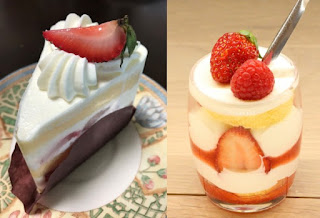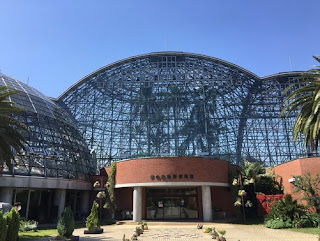Well, not only tasting good, but also there is a unique culture regarding western-style cakes in Japan that is not seen in western countries.
Here are some of the most popular cakes in Japan:
Christmas cake, or shortcake
 |
| Short cakes from Éclat des jours pâtisserie Official, Toyo-cho, Tokyo |
When I spent the holiday season in a western country for the first time, I was shocked to learn that they do not have the custom to eat Christmas cakes, namely shortcakes.
In Japan, Christmas cake is a must for celebrating Christmas. They are mostly consumed on the Christmas Eve. (By the way, young Japanese people tend to think that the Christmas Eve is a romantic day and should be spend with their boyfriend or girlfriend, not with their family)
Therefore, on the Christmas day, most stores start selling the unsold Christmas cakes with reduced price.
Mont Blanc
 |
| Mont Blanc from Isozaki, Monzen-nakacho & Hamacho, Tokyo |
That's why Mont Blancs are especially popular in autumn, the season of chestnuts. During this season, pastry chefs are keen to create their original Mont Blancs using domestically produced chestnuts.
Green tea cakes
 |
| Green tea cake from SAKURA, Toyosu, Tokyo |
Green tea is popular ingredient of Japanese traditional and non-traditional desserts, not to mention the maccha ice cream, favorite dessert of the tennis superstar, Naomi Osaka.
Interested in Japanese daily life and daily food which is not covered in you guidebook? Join our free walking tour!
(by Seiko)














































